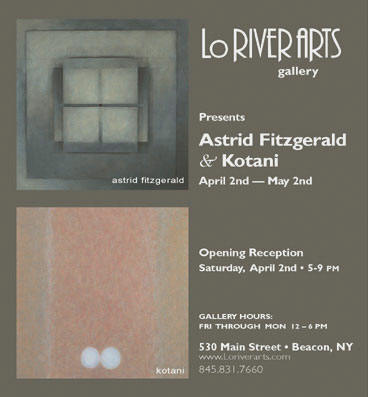
ASTRID FITZGERALD & KOTANI
NEW PAINTINGS
APRIL 2ND TO MAY 2ND, 2005
LoRIVER ARTS GALLERY, BEACON, NY

Gallery hours Friday through Monday, 12 to 6 pm
530 Main Street, Beacon, New York 12508
GALLERY NOTES
Astrid Fitzgerald & Kotani:
The Mountain Way and the River Way
For a year I dreamed of this exhibition without knowing what would come to light when the works of Fitzgerald and Kotani would at last occupy the same space. Would there be some mutual clarification of methods and aims? Would there be uneasiness, as when followers of different schools unexpectedly meet? I knew only that the work of both artists is formidably rich, superbly crafted, and dedicated Ė dedicated in the sense that these artists serve visions and values. Their work records intuitions of the larger context of our lives. Over the coming weeks, this exhibition is sure to reveal more. But this much is now clear: she takes the mountain way, he takes the river way.
What is the mountain way? The phrase is a metaphor for the rigorous exploration of spiritual traditions and of the spiritual in art, in which Fitzgerald has engaged for many decades. Few artists have a comparable understanding of the steady rightness and dynamic expressiveness of the so-called Golden Mean proportion, which discreetly orders many of her compositions. Not so many have looked upon spiritual tradition, from its meditative practices to its soaring concepts of human identity and potential, as simply the sensible place to seek guidance, inspiration, groundedness. The mountain way is deliberate, arduous, sometimes backbreaking and discouraging. Yet it links one with indescribable intimacy to untold generations past who have followed that way and achieved so much. Fitzgerald brings to this exhibition transformations of Western medieval patterns and of the Tantric patterns of Asia. But she is equally immersed in the traditions of Cubist and Constructivist design, to which she gives new life. The mountain way is not all hard. Just as there are incredible delights along mountain paths Ė woodland flowers, edible plants, bird song, cliffs and waterfalls, and at the summit perhaps an alpine garden of rare species Ė so along the artistís mountain way there are many delights. All this is evident in Fitzgeraldís art, where we can find it.
Kotani takes the river way, equally valid and rewarding. It is the way of intuition and allusion, whisper and hum, interpenetration and flow. Its basis in craft discipline Ė in knowing brush, paint, and canvas, line, light, and shadow through decades of effort Ė is rigorous. In that respect the river way and mountain way are one. But the river way forgets in order to remember; abandons concept to discover unexpected signs and motions; feels certain in paradox; prizes sheer visual delight as a kind of wisdom, a godly celebration. It flows on. It does not wait for our questions. What is the hymn number weíre supposed to be singing? Sorry Ė no hymn, no number, but listen! See!
The river way is by no means all soft, indistinct, and flowing. Those who venture onto the river had better build a solid vessel, study winds and currents and shifting sandbars, and know their landmarks. Otherwise, they can easily drown while imagining that they are just having a recreational swim. The river way demands an odd sort of toughness. As an honored friend of mine used to say, "let us not concludeÖ" That is the river way.
Kotaniís practice catches up many values in its flow Ė among them, the brush traditions and meticulous craftsmanship of his native Japan, the visual poetry of American color-field painting, the ingenious storytelling of Surrealism, and the formal perceptions of a trained ceramic artist (he has taught both painting and ceramics for decades). On the river way, unlike things make a whole.
"Let us not conclude." But let us by all means explore a shared exhibition in Beacon that offers more of substance and delight than streets full of galleries in a city to the south. - Roger Lipsey, PhD
Roger Lipsey, a resident of nearby Garrison, New York, is the author of The Spiritual in Twentieth-Century Art (Dover Books, reissued 2004). He is currently writing a book on Thomas Mertoníís Abstract Expressionist drawings of the 1960s.
OPENING - APRIL 2, 2005
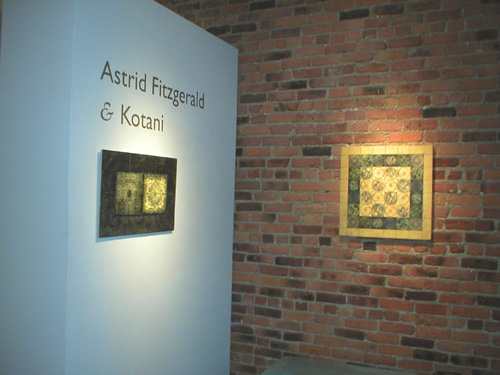
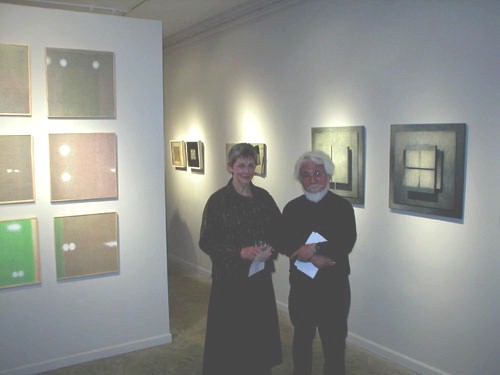
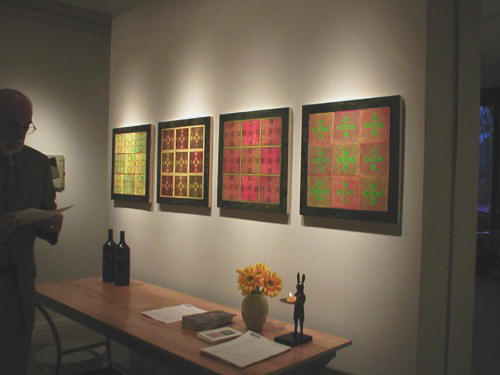
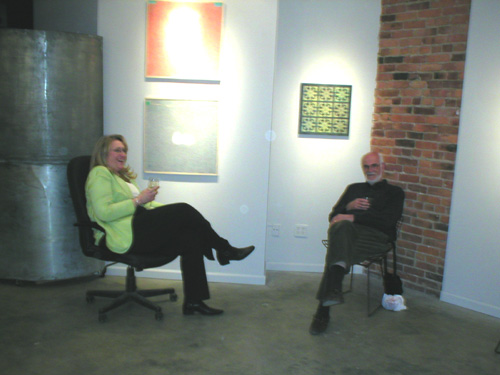
|
|
|
|
|
|
|
|
|
|
|
|
|
|
|
|
|
|
|
|
|
|
|
|
About the Artist Astrid Fitzgerald
by John Nelson
John Nelson (JN): Tell me about yourself.
Astrid Fitzgerald (AF): I came to the States
in1961, dreaming about going to Alaska. But I got stuck in Manhattan, and after
a few jobs in advertising, went to Art Studentís League and Pratt. After being
accepted into a few juried shows and winning some awards, I began to paint
full-time, while raising a son and spending a lot of time reading the great
books of the Perennial Philosophy. During the hay-days of corporate collecting,
agents and curators all over the States placed my work in important collections
and commissioned many site-specific works. Iíve shown my work in
solo-exhibitions in Switzerland and New York City, and in traveling group
exhibitions around the world. My last show was at the Muroff Kottler Visual Arts
Gallery at SUNY Ulster. Iím very excited about showing my work together with
Kotaniís in Beacon - this exciting new art center in the Hudson Valley.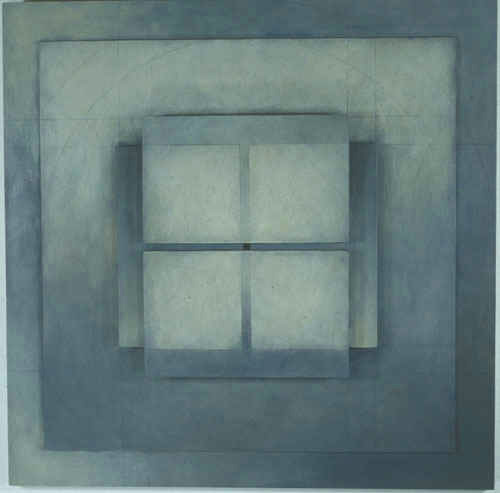
JN: What is your artistic medium of choice? Why that medium?
AF: I can't say that I prefer one medium over another. For many years I used Casein - a medium that goes back to the Ancient Egyptians - for it's luminosity and versatility. When my work wanted to become more expressive and spontaneous, I went to oil sticks and pastels. But there is nothing like the brush and oil paint to give expression to more subtle emotions - to the inner visions. Most recently I've used Encaustic, made from pure beeswax and pigment, which, by its very nature, led to the use of imagery in a series that is a kind of tribute to icons expressing an on-going search into the nature of things.
JN: Your recent works is based on the "Golden Mean" proportions. Could you tell us a little about that?
AF: Actually, I began to work with geometric forms in the early seventies, which then led to the study of philosophical geometry, including the Platonic Solids and the Golden Mean proportions. The Golden Section is a universal principle underlying nature from the DNA-spiral to our galaxy. Its harmonious proportions and mathematical enigma have fascinated philosophers and architects for thousands of years, most recently during the Renaissance. In some of my new work, I used Da Vinciís drawings of the Platonic Solids - the most exquisite renderings we know of.
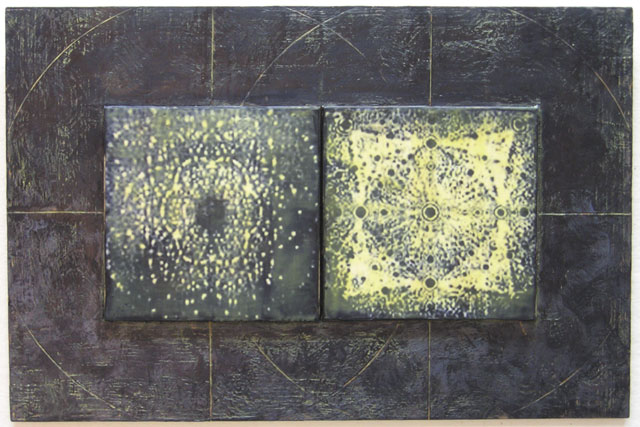 JN:
What do you think the most important thing is for an artist to learn,
technically speaking?
JN:
What do you think the most important thing is for an artist to learn,
technically speaking?
AF: I think an artist should be very familiar with the medium, its possibilities, limitations and archival properties. When it comes to technique in painting, I think an artist can only be taught by someone else to a certain point. Artists usually realize when they "know what they are doing" and when itís time to chuck out learned techniques, and rules and modes.
JN: Do you see yourself in your artwork? How?
AF: Iím not terribly identified with my work, and therefore donít take criticism very personally. As it is, I donít have much to do with what comes out of me. But the artwork does express my interests and passions, and, of course, my state of consciousness at the time of painting. To me painting is a spiritual pursuit - a means to self-knowledge - not much different from actively engaging in a spiritual exercise or a monastic way of life.
JN: What motivates your creative ideas and creative activity?
AF: That has varied quite a bit over time. Iíve known times of "creative frenzy" when nothing else in the world mattered, when I was driven by an "inner necessity" to create, to make something beautiful, or to express something deeply felt in meditation. Then there have been times when Iíve questioned what I was doing, when I looked to other artists for inspiration - to Kandinsky, Mondrian, Klee, Rothko, Nicholson, and others. Questioning the current state of the visual arts brought about an extensive period of reflection, which resulted in a book: "An Artistís Book of Inspiration - A Collection of Thoughts on Art, Artistís and Creativity."
JN: You were born in Switzerland and exhibit your work there often. What are some of the differences between the art worlds in Europe and America?
AF: My exhibitions in Switzerland have been very successful, mostly because there is a deep appreciation of abstract art. In Europe ordinary people know how to look at art. Somehow it must be in their genes. When they see something that speaks to them, they want it and buy it. In America contemporary art has to have the stamp of approval by a major critic before collectors rush to the gallery to invest in the latest trend. Itís really sad that true artists who create "quiet art" all around America are not given much exposure. But there was one good thing in the States during the Eighties and early Nineties: corporate art collections, which is where much of my work ended up. And, of course, we have the enjoyment of some of the best art museums in the world. But we desperately need an administration that is friendlier towards the Arts.
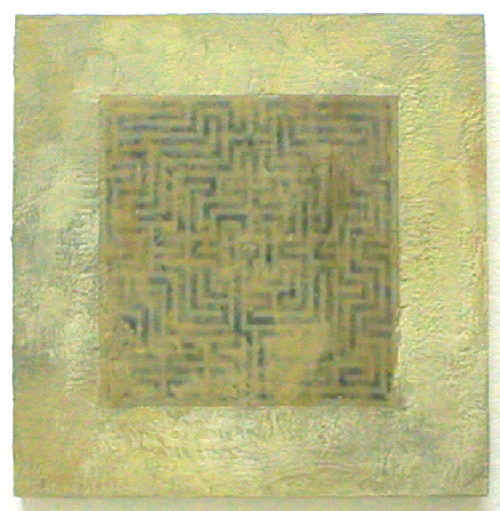
JN: Who were and who are your favorite artists and why?
AF: Well, my favorite artists changed many times over my artistic career. But to this day some of the cubists remain my favorites. I was also deeply influenced by "An Art of our Own: The Spiritual in Twentieth Century Art" by Roger Lipsey, an art historian, who lives in Garrison. It was at his suggestion that the work of Kotani and mine are being shown together. Some of my favorite artists right now happen to be people who work with nature. I love Andy Goldsworthyís work because itís incredibly beautiful, yet ephemeral. He creates events that celebrate nature and awakens people, who have forgotten how to wonder at its beauty and mystery. For the same reason I like James Turrell, who is creating an enormous earthwork in a dormant crater in the Arizona desert. This mind-boggling monument, if it ever gets finished, will have shafts aligning with astrological events, where people can sit and watch the sunlight shift during the day and contemplate the stars at night. Christoís "The Gates" and the thousands of people who came from all over the world for the opening day in Central Park was also a surprisingly moving and unifying experience.
JN: Describe yourself in one word. Why that word?
AF: Thatís a tough one. I wear many hats. Can we leave it at that?
JN: Would you give us your personal definition of Art?
AF: In order to qualify for Art with a capital "A" - be it music, architecture, dance, painting or religious icon - it must have the power to move . . . to open the heart of the viewers, to lift them, for a while, out of their every-day concerns. #
PRESS RELEASE
Exhibition Opening, LoRiver Arts Gallery, Beacon, New York
LoRiver Arts Gallery at 530 Main Street, Beacon, New York, is pleased to present the works of two artists, Astrid Fitzgerald and Kotani, in a spiritually charged exhibition. Opening reception for the artists is Saturday, April 2nd, 5-9 pm. The show will run through May 2nd.
Linked by a purely interior language, Fitzgerald & Kotani have created a visual dialogue rooted in ancient mysticism. Together, the artists explore the reality of their inner experiences within the boundaries of the outer world by continuing to search for the true nature of things.
Fitzgeraldís work is based on "The Golden Mean" a centuries old geometric measure familiar to architects and philosophers. The "measure" being a perfect division of space - a mathematical mystery. Fitzgeraldís body of work on view in this exhibition provides the viewer with "a range of iconic imagery from sub-atomic to the meters of language". Ms. Fitzgerald is the author of several books which include An Artist's Book of Inspiration - A Collection of Thoughts on Art, Artists, and Creativity - Lindisfarne Press, 1996 and Being Consciousness Bliss - A Seeker's Guide - Lindisfarne Books, 2002, which are all available and on view in the exhibit.
Kotaniís paintings reveal the artistís ability to create an imagined universe in full foison. Kotani, fully committed to the craft of painting, embraces the tension between thought and act as he explores the ever-shifting conjunction of form/color and thought/emotion. The artistís paintings possess an inner sound that in some way actively enlarges our consciousness. Kotaniís work embodies a unity of self which fully embraces a range of human emotions. Kotani, creating and exhibiting his art for over thirty years, remains receptive to the notion or concept of shared meaning.